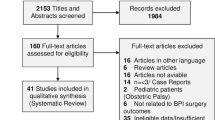Abstract
Objective: To find out the clinical effects of methylcobalamin on the recovery of active elbow flexion after neurotisation in brachial plexus injury.
Design: Controlled single-blind trial with a 2-year follow-up.
Patients: One hundred and seventy-nine male patients with isolated total root avulsion brachial plexus injury treated within 6 months of the injury were recruited in this study.
Intervention: Exploration of the plexus and ipsilateral spinal accessory nerve neurotisation were carried out in every patient by using a sural nerve graft connecting the spinal accessory nerve to the musculocutaneous nerve. After surgery, patients were randomly allocated to two groups, the control group (89 patients) and the methylcobalamin group (90 patients). In both groups, conventional postoperative medication and rehabilitation programmes were carried out and the patients were followed up periodically for 2 years; however, in the methylcobalamin group, methylcobalamin 1.5 mg/day (in three divided doses) was given to patients during the follow-up period.
Results: Electrodiagnosis revealed significantly more rapid reinnervation of elbow flexor muscles in the methylcobalamin group (p < 0.05). Motor power was also significantly better in the patients who received methylcobalamin (p < 0.05).
Conclusions: Methylcobalamin can promote active elbow flexion in the brachial plexus of injured patients who underwent spinal accessory neurotisation.
Similar content being viewed by others
References
Narakas AO, Hentz VR. Neurotization in brachial plexus injuries: indication and results. Clin Orthop 1988; 237: 43–56
Allieu Y, Cenac P. Neurotization via the spinal accessory nerve in complete paralysis due to multiple avulsion injuries of the brachial plexus. Clin Orthop 1988; 237: 67–74
Chuang DCC, Epstein MD, Yeh MC, et al. Functional restoration of elbow flexion in brachial plexus injuries: results in 167 patients. J Hand Surg 1993; 18-A: 185–91
Songcharoen P, Mahaisavariya B, Chotigavanich C. Spinal accessory neurotization for restoration of elbow flexion in avulsion injuries of the brachial plexus. J Hand Surg 1996; 21-A: 387–90
Pfohl-Leszkowic A, Keith G, Dirheimer G. Effect of cobalamin derivatives in vitro enzymatic DNA methylation: methylcobal can act as a methyl donor. Biochemistry 1991; 30(32): 8045–51
Rosenblatt DS, Lue-shing H, Arzoumanian A, et al. Methylene-tetrahydrofolate reductase (MR) deficiency: thermolability of residual MR activity, methionine syntheses activity and methylcobalamin levels in cultured fibroblasts. Biochem Med Metab Biol 1992; 42(3): 221–5
Yamashiki M, Nishimura A, Kosaka Y. Effects of methylcobalamin (vitamin B12) on in vitro cytokine production of peripheral blood mononuclear cells. J Clin Lab Immunol 1992; 37(4): 173–82
Hatta S, Watanabe M, Ikeda H, et al. Impairment of adenylyl cyclase signal transduction in mecobalamin-deficient rates. Eur J Pharmacol 1995; 291(3): 351–8
Yamazaki K, Oda K, Endo C, et al. Methylcobalamin (methyl-B12) promotes regeneration of motor nerve terminals degenerating in anterior gracile muscle of gracile axonal dystrophy (GAD) mutant mouse. Neurosci Lett 1994; 170(1): 195–7
Akaike A, Tamura Y, Sato Y, et al. Protective effects of a vitamin B12 analog, methylcobalamin, against glutamate cytotoxicity in cultureal cortical neurons. Eur J Phamacol 1993; 241(1): 1–6
Van Beek AL, Heyman P. Electrophysiological testing. In: Gelberman RH, editor. Operative nerve repair and reconstruction. Vol. I, 1st ed. Philadelphia: J.B.Lippincott, 1991:171–84
Sunderland S. Nerve injury and motor function. In: Sunderland S, editor. Nerve injuries and their repair: a critical appraisal. 1st ed. Edinburgh: Churchill Liningstone, 1991: 281–304
Dellon AE. Sensibility testing. In: Gelberman RH, editor. Operative nerve repair and reconstruction. Vol 1, 1st ed. Philadelphia: J.B. Lippincott, 1991: 135–58
Yoqub BA, Siddigue A, Sulimain R. Effects of methylcobalamin on diabetic neuropathy. Clin Neurol Neurosurg 1992; 94(2): 105–11
Jalaludin MA. Methylcobalamin treatment of Bell’s palsy. Methods Find Exp Clin Pharmacol 1995; 17(8): 530–44
Watanabe T, Kaji R, Oka N, et al. Ultra-high dose methylcobalamin promotes nerve regeneration in experimental acrylamide neuropathy. J Neurosci 1994; 122(2): 140–3
Author information
Authors and Affiliations
Rights and permissions
About this article
Cite this article
Waikakul, S., Hirunyachote, P. Effects of Methylcobalamin in Neurotisation after Brachial Plexus Injury. Clin. Drug Investig. 17, 179–184 (1999). https://doi.org/10.2165/00044011-199917030-00002
Published:
Issue Date:
DOI: https://doi.org/10.2165/00044011-199917030-00002




